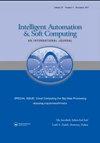An Efficient HAPS Cross-Layer Design to Mitigate COVID-19 Consequences
IF 2
4区 计算机科学
Q2 Computer Science
引用次数: 6
Abstract
This paper proposes a new cross-layer communication system for the provision of Internet services and applications to mitigate the negative impacts of COVID-19, due to which the massive online demands are affecting the current communication systems' infrastructures and capabilities. The system requirements and model are investigated where it utilizes high-altitude platform (HAP) for fast and efficient connectivity provision to bridge the communication infrastructure gap in the current pandemic. The HAP is linked to the main server or gateway station located on ground and can provide communication narrow beams towards isolated areas which suffer from poor terrestrial radio coverage or lack of communication infrastructure. The vital e-learning applications using Internet services provision from the proposed HAP system are described and modelled including system adaptation parameters such as the application and physical layers to control the data rates of different e-learning applications and the overall cell data rate. On the other hand, the provision of high-speed Internet services from the proposed system is supported by using adaptive antenna arrays onboard HAP which provides high-gain beams to achieve the required high-quality transmission data rates at the student premises and provides the capability of coverage cell area adaptation for load balancing. The concentric circular antenna arrays with tapered feeding are proposed in this adaptive antenna system to control the cell mainlobe gain and reduce the out-of-coverage radiation as well. In addition, the system feasibility has been proved in two coverage scenarios including single-beam and multibeam HAP communications.高效HAPS跨层设计减轻COVID-19后果
本文提出了一种新的跨层通信系统,用于提供互联网服务和应用,以减轻新冠肺炎疫情的负面影响,由于大量的上网需求正在影响现有通信系统的基础设施和能力。研究了系统需求和模型,其中利用高空平台(HAP)提供快速有效的连接,以弥补当前大流行期间的通信基础设施缺口。HAP与地面上的主服务器或网关站相连,可以向受地面无线电覆盖差或缺乏通信基础设施影响的孤立地区提供通信窄波束。本文描述和建模了使用所提出的HAP系统提供的互联网服务的重要电子学习应用程序,包括系统自适应参数,如应用程序和物理层,以控制不同电子学习应用程序的数据速率和整体单元数据速率。另一方面,拟议系统提供的高速互联网服务由机载自适应天线阵列提供,该天线阵列提供高增益波束,以在学生宿舍达到所需的高质量传输数据速率,并提供覆盖小区区域适应能力,以实现负载平衡。在该自适应天线系统中,提出了锥形馈电的同心圆形天线阵列,以控制小区主瓣增益并减小覆盖外辐射。此外,还在单波束和多波束HAP通信两种覆盖场景下验证了系统的可行性。
本文章由计算机程序翻译,如有差异,请以英文原文为准。
求助全文
约1分钟内获得全文
求助全文
来源期刊

Intelligent Automation and Soft Computing
工程技术-计算机:人工智能
CiteScore
3.50
自引率
10.00%
发文量
429
审稿时长
10.8 months
期刊介绍:
An International Journal seeks to provide a common forum for the dissemination of accurate results about the world of intelligent automation, artificial intelligence, computer science, control, intelligent data science, modeling and systems engineering. It is intended that the articles published in the journal will encompass both the short and the long term effects of soft computing and other related fields such as robotics, control, computer, vision, speech recognition, pattern recognition, data mining, big data, data analytics, machine intelligence, cyber security and deep learning. It further hopes it will address the existing and emerging relationships between automation, systems engineering, system of systems engineering and soft computing. The journal will publish original and survey papers on artificial intelligence, intelligent automation and computer engineering with an emphasis on current and potential applications of soft computing. It will have a broad interest in all engineering disciplines, computer science, and related technological fields such as medicine, biology operations research, technology management, agriculture and information technology.
 求助内容:
求助内容: 应助结果提醒方式:
应助结果提醒方式:


